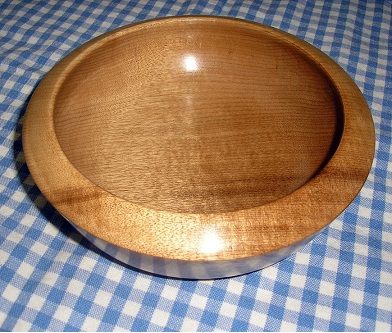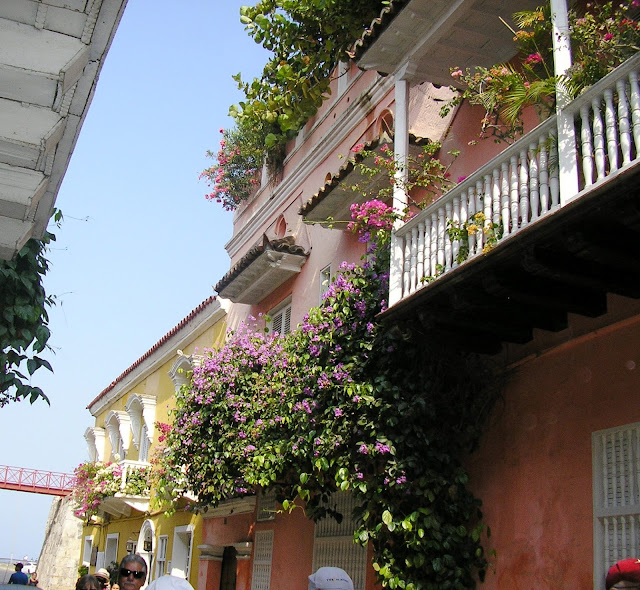Anxious for spring, I bought a little pot of tulips.
Friday, February 22, 2019
Saturday, February 16, 2019
Panama Canal and Adjacent Caribbean
The itinerary for our Jan. 29-Feb. 8 cruise on the Island Princess:
Jan. 29th departed Port Everglades, Florida around 5 p.m.
The port has special workers to cast off the lines. Only two cruise ships in port that day, often 6-8.
Jan. 30th At Sea Could see the eastern coast of Cuba in the distance much of the daylight hours. One TV channel had a map showing our progress on our route, naming any nearby land.
Jan. 31st Arrived and moored at Falmouth, Jamaica, early morning.
Originally, we were to be in Ocho Rios. I didn't want to stay in Falmouth but see some of the countryside, so we took an excursion to Good Hope Plantation.
The fenced-in terminal was built by several cruise lines to open up a new tourist port in Jamaica. It can only handle two ships at a time. As soon as our bus exited, we saw piles of garbage dumped along the side of the road. The houses were ramshackle and the streets unclean. Obviously a poor country. Usain Bolt the Olympic runner is originally from Falmouth.
Falmouth port was established in 1769 to handle the large quantities of sugar leaving and slaves entering the country. Good Hope was one of the largest plantations, 2000 acres, mostly growing sugarcane. Some of the cane was processed into sugar, some made into rum.
 |
| Good Hope Great House built circa 1774 |
The great house had a bathtub. The Jamaicans figured out how to pipe water into the mansions before U.S. Colonists.
Aviary built among ruins of a slave hospital. Quite hot and humid.
 |
| Selling coconut water |
 |
| Lots of pretty flowers |
 |
| Tombs above ground because of water table |
Feb. 1st At sea. Didn't see any other ships, no land. It was very windy so didn't spend time on the balcony nor on the promenade deck. A log of the cruise provided to us on our last day aboard stated that the winds Feb. 1st were 47 knots, considered strong gale winds. The ship rolled quite a bit. I felt queasy when I got up, but took a promethazine and was fine the rest of the day. It did make for careful tooth brushing, face washing, etc. as your target moved ; I noticed the rolling the most in this small enclosed space.
Feb. 2nd Cartagena, Columbia, founded 1533.
Our excursion bus took us first to Castilo de San Felipe which is surrounded by the modern city now. The Spanish fort was built 1536-1657 to protect the gold coming out of South America
 |
Street vendors here as well, following you down the street.
|
St. Peter Claver was a Catholic priest who gathered and supplied resources to care for the working class and slaves, especially health needs. He lived among the poor.
Feb. 3rd Panama Canal
When the Panama Canal opened in 1914, it saved ships going from the Atlantic to the Pacific over 7,000 miles of travel. Our cruise ship only went up the 3 Gatun Locks to Gatun Lake, then after tendering excursion passengers, turned around and docked in Colon. My husband and I were bused to a ferry which took us through the last 2 sets of locks down to the Pacific. Thus in one day we went from the Atlantic to the Pacific.
The mechanism is natural hydraulics, no pumps to change the water levels
 |
| Tight squeeze |
The little gray "tractor" is called a mule. It doesn't pull the ship but keeps it centered so it doesn't bang into the walls of the canal.
 |
| Island Princess (blue an white) has less than a foot to spare on each side. |
You can see how the lines attach to the ship to keep it tethered to the mule. Most ships have at least 4 mules, two on each side aft and forward.
The Panama isthmus connects Central America and South America in a west to east direction. Thus going thru the canal is from north to south (or south to north). Over 27000 lives were lost to disease, floods, landslides as the French and lastly the United States hacked through jungle. The area is hilly and mountainous, not flat, so that meant a lot of territory to dig through. Finally, it was decided to dam the Chagres River which kept flooding and obliterating the cuts to form a lake, Gatun Lake. Mira Flores locks also include a lake part of the way.
Ships pay hundreds of thousands of dollars based on weight. Cruise ships pay by number of cabins. A small sailboat might pay $1000, a freighter $300,000
Our ferry tethered to another ferry and a sailboat as we approached the gates.
Here you can see one of the lines tossed to the adjacent ship and secured.
Most of the channels have two sets of gates as a safety measure. In the case of the Gatun Locks, if the gate was damaged, the lake would totally drain into the Atlantic Ocean.
Our "buddy" sailboat somehow became untethered from our group, swinging and almost hitting the wall and even the gate. They finally maneuvered behind us and got turned around so they could tie up with us again. The gates were not opened until they did this. A moment of excitement.
The Culebra Cut (now called Gaillard Cut) was the area most badly flooded by the Chagres River. The French never conquered the challenge as landslides in the rainy season covered over all of their hard digging work. Even today, it is not a very wide passage.
We returned by bus from Balboa port (part of Panama City) to our ship in Colon about 7 p.m. The Super Bowl was playing on the big screen above the pool.
Feb. 4th Limon, Costa Rica
This poor city on the Atlantic Coast mostly grows and exports bananas. There were excursions to zip line thru the rain forest, ride small boats in canals thru the forest in hopes of seeing animals and birds, a visit to a sloth sanctuary, but we chose to go to Veragua Rain Forest research center and park.
We had a bumpy bus ride on narrow roads up the mountain. We passed "ranches" consisting of a small stucco house (with satellite dish, however), an open-air covered corral, and livestock such as cattle, donkeys, horses, and roaming chickens.
You can barely make out the Island Princess in the distance docked in Limon.
Our group rode gondolas thru the forest canopy. Visited a butterfly display and butterfly garden, a nocturnal frog habitat, heard from a researcher about the animals in the area (which we didn't see except a sloth in a tree). We were served a sandwich and fruit (wonderful pineapple) and a drink.
Feb. 5th Another day at sea
Feb. 6th George Town, Grand Cayman
Because of the reefs, the cruise ships anchor and passengers are tendered to the dock.
The first part of our excursion was a ride on a mini sub. We saw a shipwreck, coral, and finally lots of fish when a diver fed them.
We next went to Hell. Then stopped at a shop for a taste of rum cake and a shot of rum (I didn't drink).
Not lava, but eroded limestone
Our final stop was a Turtle Centre where turtles are bred.
Tourists can pick up the young turtles (this one 9-months-old) as long as they hold them over the tank. The young ones are not with the adults. If they became agitated and flapped their flippers, the holder was to stroke them under the chin to calm them down. There were wash basins to use after holding the turtle as they are carriers of salmonella.
We saw so many iguanas on Grand Cayman. There is a place for petting stingrays, but we did not go there as we did that in 2017 in Grand Turk.
You cannot see the Island Princess in this shot, but the other 3 ships at anchor nearby.
Of all our stops, Grand Cayman had the pretty blue water most like what we saw in the Eastern Caribbean.
Feb. 7th At sea Again we saw Cuba in the distance but this time the northwest part. We did see a few big cargo ships out miles from us.
I bought a magnet from a street vendor in Cartagena, a tac pin of a 3-toed sloth at Veragua Rain Forest, and a turtle on a stone called Caymanite at the Turtle Centre. Now I need to make room in my miniature box for them.
Subscribe to:
Posts (Atom)






















































